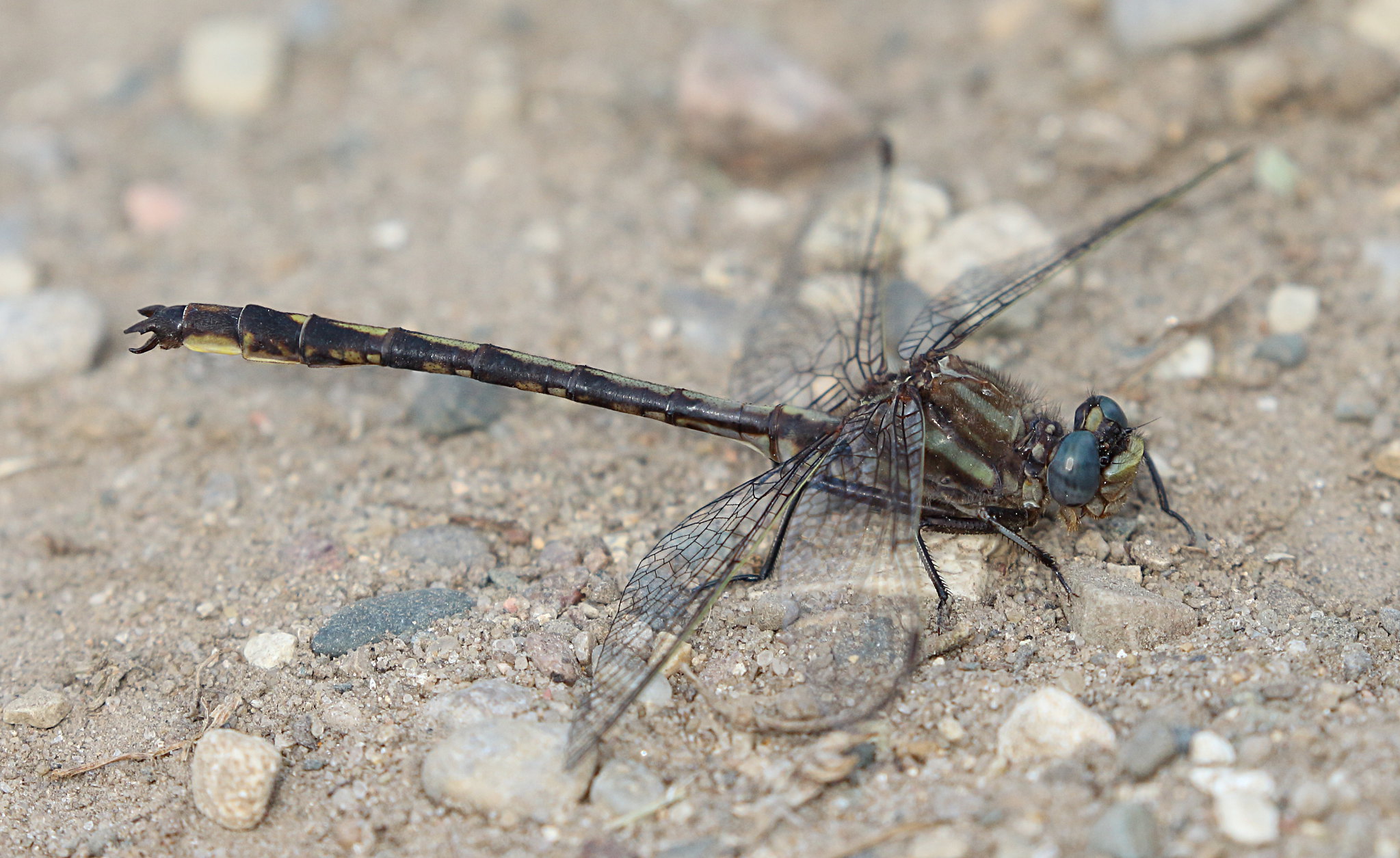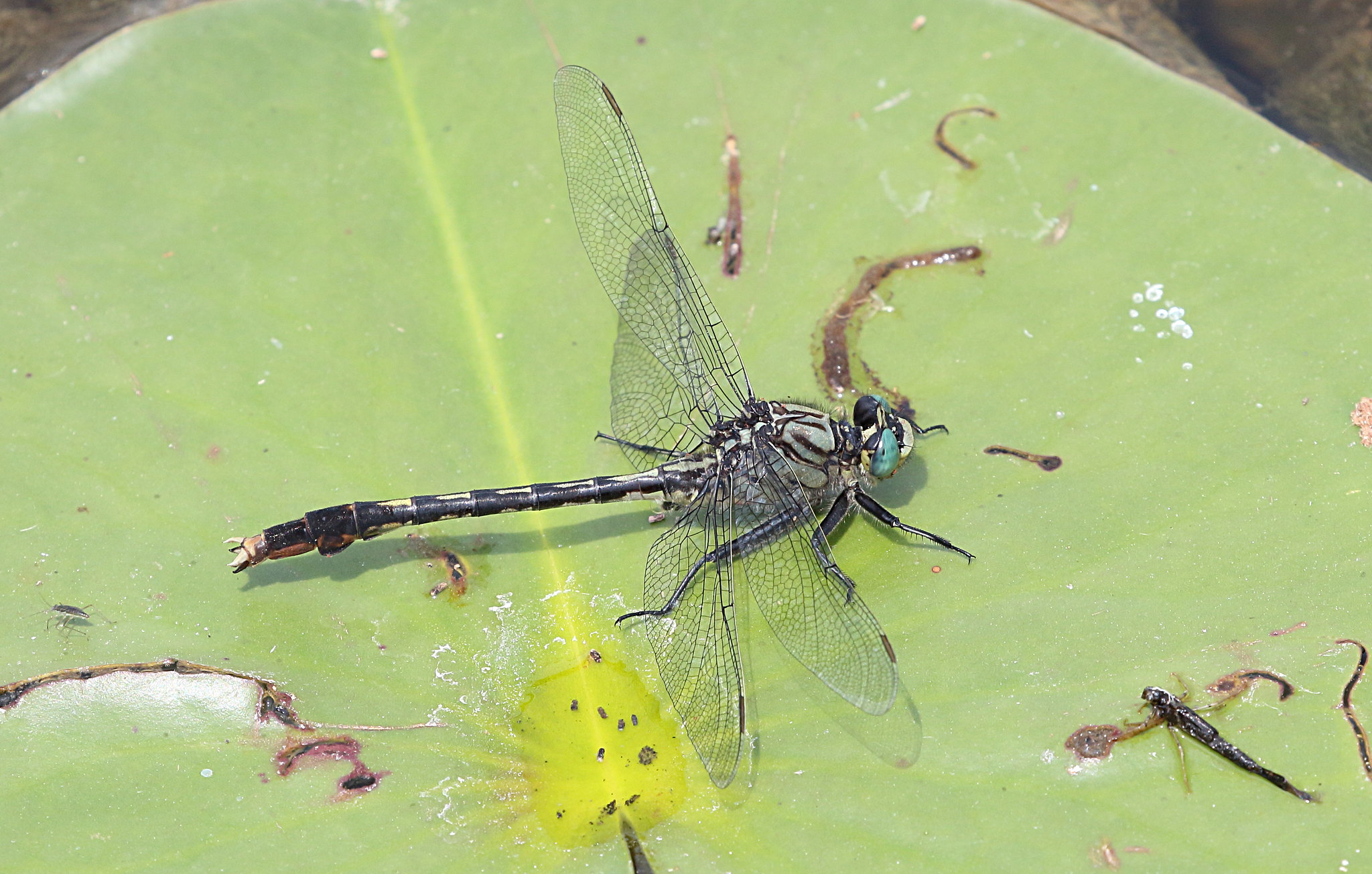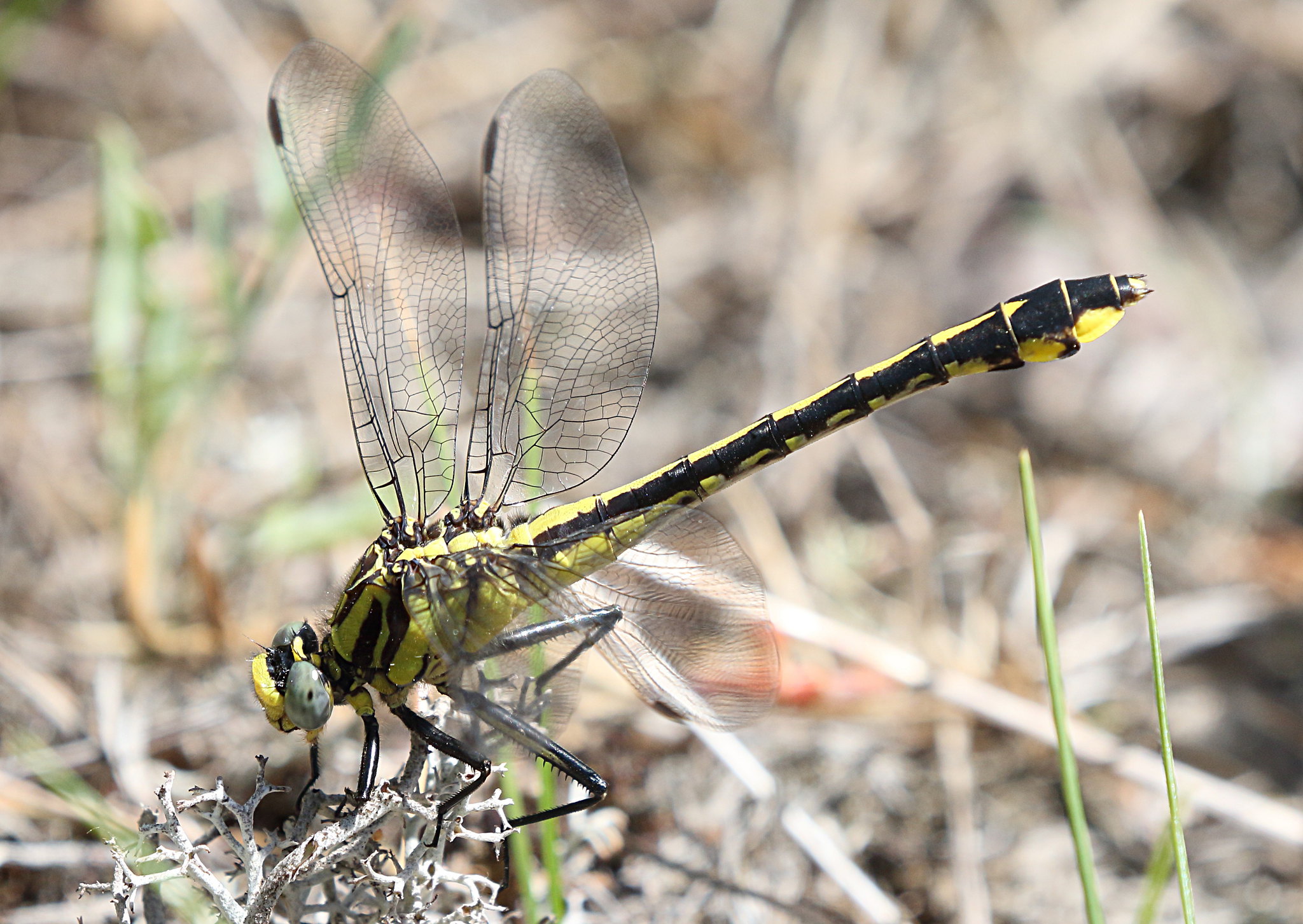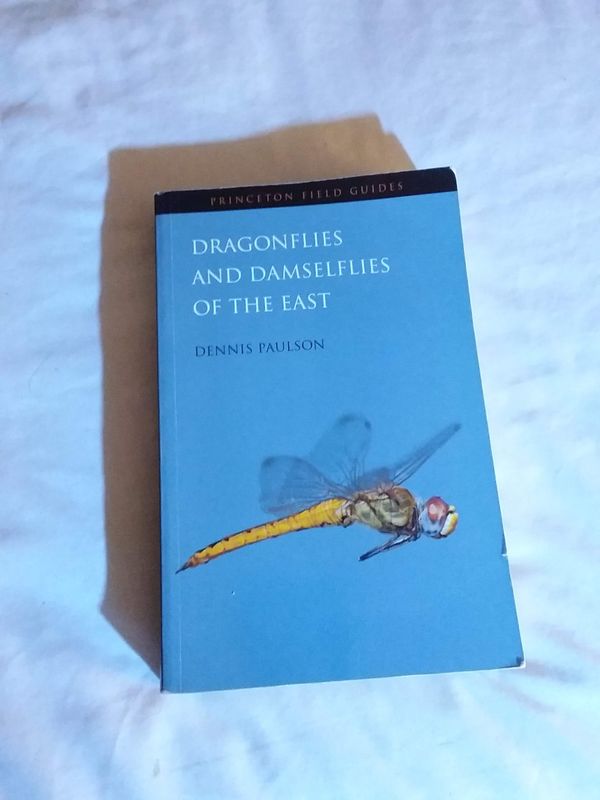Dragontown part VI: Continuing our walk down clubtail avenue.
Jan 25, 2019 20:59:20 #
I have been trying to have a post about every week, and so far so good. We return to “Dragontown”, and there are still more species of clubtails. This will almost finish my little tour of this large family. As always, identities are usually tentative and I would welcome being corrected.
The first picture shows one of the most common clubtails, identified as a male based on the claw-like shape of its cerci (those little appendages at the end of the abdomen). I think this is the dusky clubtail (Phanogomphus spicatus). Different species have different habits, and this one is definitely inclined to plant itself on open ground. I most often see them sitting on dusty footpaths.
 Dusky clubtail dragonfly by Mark Sturtevant, on Flickr
Dusky clubtail dragonfly by Mark Sturtevant, on Flickr
Next is one of the species that is typically found over lakes and ponds. There is more than one possible identity for this one, but I have decided on the lilypad clubtail (Arigomphus furcifer) although an extremely similar species is the unicorn clubtail (Arigomphus villosipes). So there is a fair chance it have this one wrong. In any case, since the two species are often found together I know to look for both of them next summer.
 Lilypad clubtail dragonfly by Mark Sturtevant, on Flickr
Lilypad clubtail dragonfly by Mark Sturtevant, on Flickr
One of my favorites in this family is a common species in the Magic Field. This female is (I think) a midland clubtail (Gomphurus fraternus). They are very bold in color and also easy to photograph. Sitting with an abdomen projected into the air is called the ‘obelisk posture’ (a wonderful term!), and dragonflies do this to point their abdomen toward the sun. This reduces the surface area that is exposed to the sun so that they do not overheat. This one has a definite ‘lean’ to the posture, but around noon dragonflies may post their abdomen straight up.
 Midland clubtail dragonfly by Mark Sturtevant, on Flickr
Midland clubtail dragonfly by Mark Sturtevant, on Flickr
 Midland clubtail dragonfly by Mark Sturtevant, on Flickr
Midland clubtail dragonfly by Mark Sturtevant, on Flickr
That does it for the clubtails for now. There is one more species in this family to show, but that one is Very Special and it will be presented later. 😉
I close with a non-clubtail. I certainly have seen a lot of banded pennants (Celithemis fasciata) this past summer, which is surprising since I did not even know this species existed a year ago! This is a female.
 Banded pennant dragonfly by Mark Sturtevant, on Flickr
Banded pennant dragonfly by Mark Sturtevant, on Flickr
The first picture shows one of the most common clubtails, identified as a male based on the claw-like shape of its cerci (those little appendages at the end of the abdomen). I think this is the dusky clubtail (Phanogomphus spicatus). Different species have different habits, and this one is definitely inclined to plant itself on open ground. I most often see them sitting on dusty footpaths.
 Dusky clubtail dragonfly by Mark Sturtevant, on Flickr
Dusky clubtail dragonfly by Mark Sturtevant, on Flickr Next is one of the species that is typically found over lakes and ponds. There is more than one possible identity for this one, but I have decided on the lilypad clubtail (Arigomphus furcifer) although an extremely similar species is the unicorn clubtail (Arigomphus villosipes). So there is a fair chance it have this one wrong. In any case, since the two species are often found together I know to look for both of them next summer.
 Lilypad clubtail dragonfly by Mark Sturtevant, on Flickr
Lilypad clubtail dragonfly by Mark Sturtevant, on Flickr One of my favorites in this family is a common species in the Magic Field. This female is (I think) a midland clubtail (Gomphurus fraternus). They are very bold in color and also easy to photograph. Sitting with an abdomen projected into the air is called the ‘obelisk posture’ (a wonderful term!), and dragonflies do this to point their abdomen toward the sun. This reduces the surface area that is exposed to the sun so that they do not overheat. This one has a definite ‘lean’ to the posture, but around noon dragonflies may post their abdomen straight up.
 Midland clubtail dragonfly by Mark Sturtevant, on Flickr
Midland clubtail dragonfly by Mark Sturtevant, on Flickr Midland clubtail dragonfly by Mark Sturtevant, on Flickr
Midland clubtail dragonfly by Mark Sturtevant, on FlickrThat does it for the clubtails for now. There is one more species in this family to show, but that one is Very Special and it will be presented later. 😉
I close with a non-clubtail. I certainly have seen a lot of banded pennants (Celithemis fasciata) this past summer, which is surprising since I did not even know this species existed a year ago! This is a female.
 Banded pennant dragonfly by Mark Sturtevant, on Flickr
Banded pennant dragonfly by Mark Sturtevant, on FlickrJan 25, 2019 21:25:27 #
Mark Sturtevant wrote:
I have been trying to have a post about every week... (show quote)
I started looking for a book when I saw the work you and Docshark were doing with dragonflies. Beautiful.
I recieved it today.
A bit of time to look it over and I may be of some ID help in the future.
The book up next. Nite, Mark.
Bill
Jan 25, 2019 21:36:58 #
That is the book I have. ALL of the dragonflies and damselflies in the Eastern US! It is sitting next to me as I type. Look at all those clubtails!
Jan 25, 2019 21:45:11 #
Jan 25, 2019 23:02:41 #
Mark Sturtevant wrote:
That is the book I have. ALL of the dragonflies and damselflies in the Eastern US! It is sitting next to me as I type. Look at all those clubtails!
We can compare notes on dragonfly genitals.(insert grin).
It looks to be THE book on the subject. The numerous species mean a lot of niches being filled and a lot of food sources, being utilized. How about a thesis on dragonfly population dynamics?
Bill
Jan 25, 2019 23:13:08 #
Mark Sturtevant wrote:
I have been trying to have a post about every week... (show quote)
Look close in lower right corner of #2. Lilypad clubtail. Looks to be a damselfly naiad.
Bill
Jan 26, 2019 07:00:02 #
Jan 26, 2019 08:49:02 #
newtoyou wrote:
Look close in lower right corner of #2. Lilypad clubtail. Looks to be a damselfly naiad.
Bill
Bill
I noticed it. Don't know what it is. Lilypads are stations for a lot of different insects.
Jan 26, 2019 10:42:24 #
Another outstanding set Mark. Love your female Midland. I can tell you that your Lilypad Clubtail is correctly identified. If you look closely or at a larger image you can see a rusty edge to the last three abdominal segments. The Unicorn is all black.
Dennis' book is quite helpful in identifying Odes. He is finishing up a book on Costa Rican Odes now. My dragon hunting partner and I were with him last summer in Costa Rica shooting. He has a new dragonfly book coming out at the end of February. You can get it on Amazon. Do you have Ed Lam's book "Damselflies of the Northeast?" And yes that is a damsel in it's penultimate instar on the lilypad.
-Doc
Dennis' book is quite helpful in identifying Odes. He is finishing up a book on Costa Rican Odes now. My dragon hunting partner and I were with him last summer in Costa Rica shooting. He has a new dragonfly book coming out at the end of February. You can get it on Amazon. Do you have Ed Lam's book "Damselflies of the Northeast?" And yes that is a damsel in it's penultimate instar on the lilypad.
-Doc
Jan 26, 2019 11:00:55 #
Jan 26, 2019 11:35:25 #
docshark wrote:
Do you have Ed Lam's book "Damselflies of the Northeast?" And yes that is a damsel in it's penultimate instar on the lilypad.
-Doc
-Doc
Thanks, doc! I don't have the damselfly book. I should check it out. There is a Hemipteran to the left of the clubtail on the lilypad. I did not know what the 'thing' was to the right but now its obvious that it is a damselfly nymph. I see the legs.
I make little Powerpoint files in which I collect pictures to help ID insects in my areas. One of them is a file just for the clubtails, and I have made a note of the detail you mentioned about lilypad vs unicorn clubtail. I did not know that was critical.
Jan 26, 2019 12:12:37 #
If you want to reply, then register here. Registration is free and your account is created instantly, so you can post right away.








